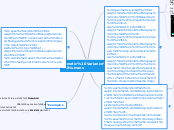Genetic Variance in Humans
Meiosis - the process to create gametes (egg and sperm cells) that have 1/2 the number of chromosomes as regular cells.
Crossing Over - the formation of recombinant chromosomes during prophase I, allowing exchange of genetic material between homologous chromosome pairs resulting in non-identical sister chromatids.
Random Segregation - the random division of chromosomes into 4 separate gametes.
Independent Assortment - alleles/genetic traits are inherited independently of each other (higher chance of variation).
Crossing Over
DNA Replication Error - errors in replication can cause minor to significant changes in a genetic sequence.
Insertion - adding or "inserting" a codon or sequence to a DNA strand.
Deletion - losing or "deleting" a codon or sequence from a DNA strand.
Subsitution - replacing a codon or sequence with the same number of codons within a DNA strand.
Subtopic
Physical - radiation and particles damage or alter DNA structure or replication.
UV
X-Ray
Heat
Chemical - chemicals that directly interact with DNA causing breakage or altering structure. Chemicals that can indirectly damage/alter DNA by enabling the creation of mutagenic compounds.
Base Analog
Intercalating Agent
Alkylating Agent
Deaminating Agent
Metals
Biological - altering DNA structure or replication via living organism, disrupting check and repair systems.
Bacteria
Virus
Mutagens
Examples
Mutagens
Cancer, Cystic Fibrosis, Crohn's Disease
DNA Replication Error
Sickle-Cell Anemia, Seasonal Flu Virus (new strains)
Meiosis
Eye color, Skin color, Hair color
